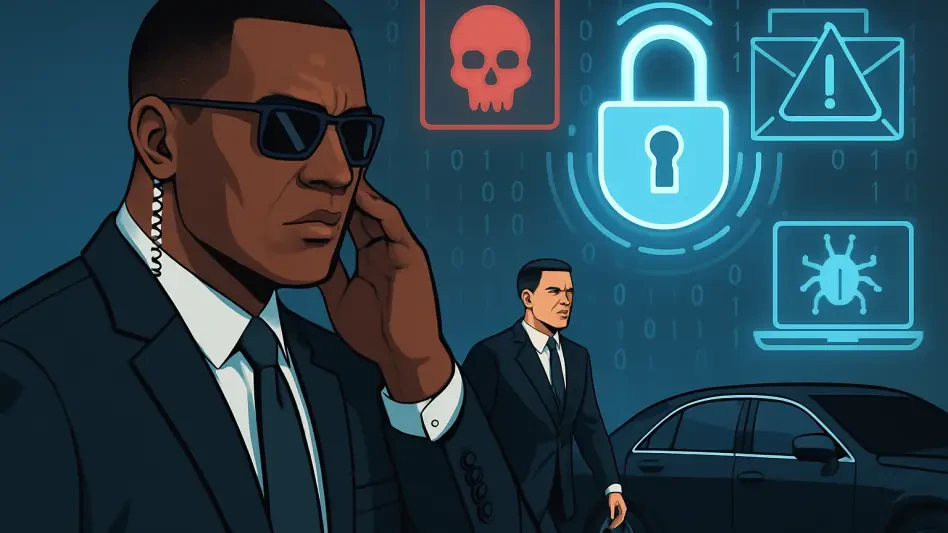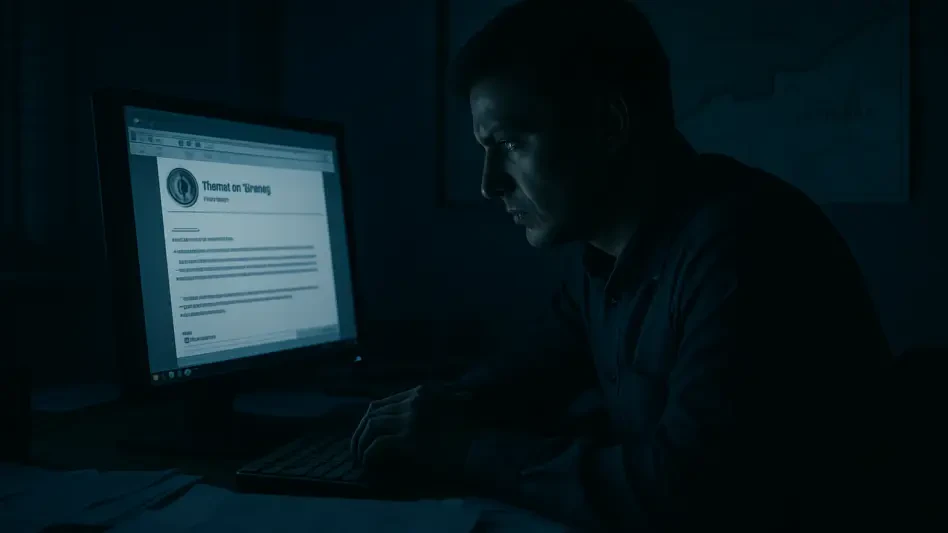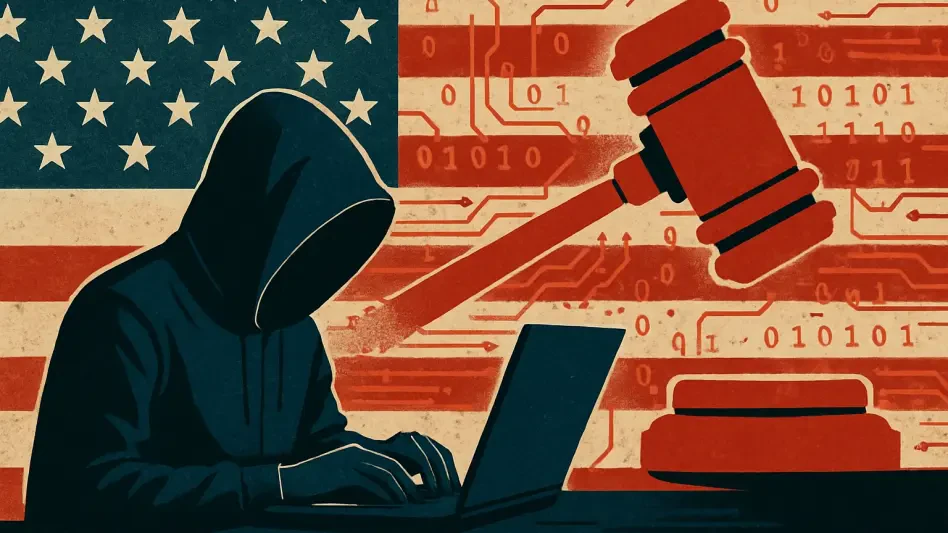In an age where societal discontent toward wealth and influence simmers just beneath the surface, the field of executive protection is undergoing a profound transformation, reflecting a growing public frustration with high-net-worth individuals (HNWIs), senior executives, and prominent figures. This period, often dubbed the Era of Resentment, is fueled by stark social and economic divides. The hostility manifests not only in physical threats but also through digital assaults and reputational attacks, creating a complex web of dangers that traditional security measures are ill-equipped to handle. Once centered on guarding physical spaces like homes or offices, protection strategies must now adapt to a broader, more intricate threat landscape. The urgency to rethink how leaders are safeguarded—across their personal safety, online presence, and public image—has become a pressing concern for security professionals and organizations alike. This shift signals a critical juncture where innovation and adaptability are paramount to ensuring the safety of society’s most visible individuals.
Evolving Threats in a Hostile Climate
The Broadening Scope of Danger
The nature of threats facing executives has expanded dramatically, transcending the boundaries of physical spaces to encompass a vast digital frontier. Where once the focus was on securing locations like corporate headquarters or private residences, today’s risks include sophisticated cyberattacks, identity fraud, and even AI-generated deepfakes designed to deceive or defame. These digital vulnerabilities often serve as precursors to physical harm, with personal data leaks potentially leading to real-world stalking or harassment. The sheer breadth of this attack surface means that protection can no longer be compartmentalized—it must address every facet of an executive’s life, from their online interactions to their daily routines. Security providers are now tasked with mapping out these interconnected risks, ensuring that a breach in one domain doesn’t cascade into others. This comprehensive outlook marks a significant departure from past practices, highlighting the need for a more dynamic and vigilant approach to safeguarding leaders in an increasingly hostile environment.
Beyond the digital realm, the Era of Resentment has intensified the emotional and psychological pressures on executives, as public scrutiny reaches unprecedented levels. Social media platforms amplify outrage, turning minor missteps into viral controversies that can tarnish reputations overnight. This heightened visibility means that even a single ill-timed comment or business decision can provoke widespread backlash, often orchestrated through disinformation campaigns or targeted activist efforts. Such incidents don’t just threaten personal standing—they can destabilize entire organizations by eroding stakeholder confidence and disrupting internal morale. Security teams must now anticipate how online sentiment can translate into tangible risks, whether through coordinated harassment or physical confrontations. This evolving dynamic underscores the importance of integrating digital monitoring and crisis management into the broader framework of executive protection, ensuring that leaders are shielded from both virtual and real-world threats with equal rigor.
Reputation Under Siege
Reputation, long viewed as an intangible asset, has emerged as a critical vulnerability for executives navigating today’s turbulent social landscape. In an era where public perception can shift in an instant, a leader’s image is often weaponized through viral social media posts, smear campaigns, or deliberate misinformation. The fallout from such attacks extends far beyond personal embarrassment, impacting business relationships, investor trust, and even market performance. Security providers are increasingly recognizing that protecting an executive’s standing is as vital as guarding their physical safety, requiring tools to track online narratives and counteract false information before it spirals. This shift reflects a broader understanding that reputational damage is not merely a public relations issue but a core security concern, demanding proactive strategies to manage how leaders are perceived in the public eye and mitigate the risks of sudden, orchestrated backlash.
The consequences of reputational harm are particularly acute in industries prone to public controversy, such as finance, healthcare, or technology, where leaders often become lightning rods for societal grievances. A controversial policy decision or a perceived ethical lapse can ignite widespread criticism, amplified by digital echo chambers that thrive on outrage. These situations often lead to tangible threats, including doxxing—where personal information is maliciously exposed online—or direct harassment at public events. Security teams must now work hand-in-hand with communications experts to craft responses that defuse tension while maintaining a leader’s authenticity, all without exposing additional vulnerabilities. This delicate balance illustrates the complexity of modern protection, where safeguarding reputation involves not just defense but also strategic engagement with public sentiment. As threats evolve, the ability to anticipate and neutralize reputational risks becomes a cornerstone of ensuring an executive’s overall safety and influence.
Building Resilience Through Innovative Strategies
Creating Unified Protection Systems
The fragmented security models of the past, which often treated physical, digital, and reputational risks as separate domains, are proving inadequate in the face of today’s interconnected threats. A data breach exposing an executive’s personal details can quickly lead to physical stalking, while a viral social media post can spark real-world protests. Addressing this web of vulnerabilities requires an integrated ecosystem that seamlessly ties together all aspects of protection. Security integrators are stepping into a pivotal role, moving beyond traditional installation tasks to design comprehensive systems that leverage cutting-edge technology and real-time intelligence. By unifying cyber defenses, physical safeguards, and reputational monitoring under a single framework, these systems ensure that a threat in one area is met with a coordinated response across all others. This holistic approach represents a fundamental shift in how executive safety is conceptualized, prioritizing adaptability and cohesion over isolated, reactive measures.
Moreover, the development of unified protection systems hinges on collaboration across disciplines, bringing together expertise from security, IT, and public relations to form a robust defense. This cross-functional teamwork allows for a deeper understanding of how threats evolve and intersect, enabling the creation of solutions that are both predictive and responsive. For instance, advanced algorithms can analyze online activity to detect early signs of hostility, while physical security protocols can be adjusted based on digital threat assessments. Such integration not only enhances the ability to neutralize risks before they escalate but also builds trust with executives who rely on these systems to protect their multifaceted lives. The emphasis on interconnectedness reflects a broader industry trend toward viewing executive protection as a strategic imperative, essential not just for personal safety but for maintaining organizational stability in an era marked by pervasive resentment and volatility.
Anticipating Risks Before They Strike
In a world where threats can materialize at the speed of a trending hashtag, waiting to respond until after a crisis unfolds is no longer a viable option for executive protection. Proactive measures, such as deploying early detection systems to monitor online chatter for potential hostility, are becoming indispensable tools in staying ahead of danger. These systems can identify brewing controversies or malicious campaigns before they gain traction, allowing security teams to intervene with targeted countermeasures. Additionally, tailoring protection plans to an individual’s specific risk profile—factoring in their industry, public exposure, or past incidents—ensures that resources are allocated where they’re most needed. This forward-thinking mindset shifts the focus from damage control to prevention, minimizing the impact of threats and preserving both personal safety and corporate reputation in a landscape where risks are as unpredictable as they are pervasive.
Equally important is the role of continuous risk assessment in maintaining a proactive stance against emerging dangers. As societal attitudes shift and new technologies enable novel forms of attack, security providers must regularly update their strategies to reflect the latest threat vectors. This might involve simulating potential scenarios, such as a coordinated cyber and physical assault, to test the resilience of current systems and identify gaps in coverage. Training executives to recognize early warning signs, like unusual online activity or suspicious communications, further strengthens this preemptive approach by empowering them to act as the first line of defense. By embedding anticipation into every layer of protection, from technological tools to human awareness, security teams can better navigate the complexities of the Era of Resentment. This commitment to foresight not only mitigates immediate risks but also builds a foundation for long-term resilience in an environment where threats are constantly evolving.
Navigating Public Presence with Caution
Executives often grapple with the dual challenge of maintaining an authentic public persona while protecting themselves from overexposure that could invite harm. In an age where transparency is valued by stakeholders, leaders are encouraged to engage openly through social media or public appearances, yet such visibility can lead to risks like doxxing or targeted harassment if personal details are shared carelessly. Security teams play a crucial role in guiding executives on how to strike this balance, advising on safe ways to connect with audiences without compromising critical information. This might mean curating online content to avoid revealing sensitive routines or locations, while still fostering a sense of relatability. The nuanced task of aligning visibility with safety underscores the evolving demands of executive protection, where personal branding and security must coexist to prevent vulnerabilities from being exploited in a climate of heightened public scrutiny.
This balance also extends to managing how executives respond to controversies or public criticism, where the line between authenticity and risk can be razor-thin. A poorly judged statement during a crisis can inflame tensions, turning a manageable issue into a full-scale reputational disaster. Security professionals, in collaboration with communications advisors, must prepare leaders with strategies to address public concerns thoughtfully, ensuring responses are genuine yet guarded against misinterpretation or exploitation. This preparation might include scenario planning for high-stakes situations, such as a product recall or a policy backlash, to equip executives with the tools to navigate scrutiny without inviting further threats. By prioritizing both engagement and caution, protection strategies can help leaders maintain trust with their audiences while safeguarding against the unique dangers posed by the Era of Resentment. This careful calibration reflects the broader need for customized solutions that adapt to the individual circumstances of each executive.








